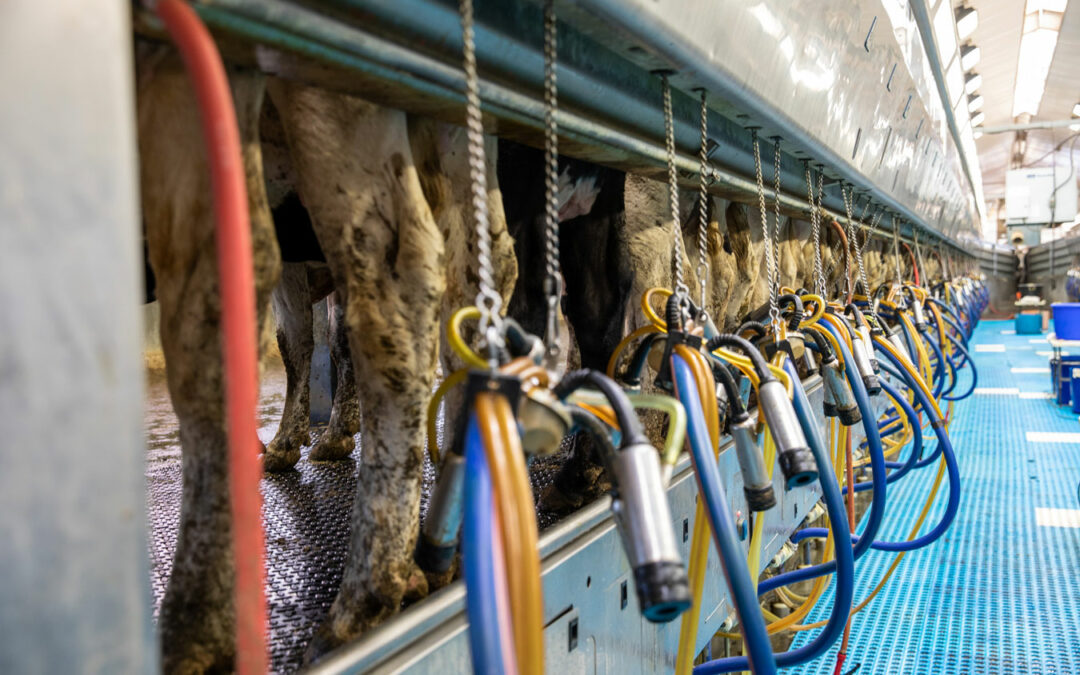Written by: Hank Spencer, DVM
Highly pathogenic avian influenza (HPAI) A(H5) viruses have been detected in U.S. wild aquatic birds, commercial poultry, and backyard or hobbyist flocks since January 2022. These are the first detections of the bird flu in dairy cattle in the U.S. since 2016. Since 2022, USDA APHIS has reported HPAI A(H5N1) virus detections in more than 200 mammals in the United States. A multistate HPAI A(H5N1) bird flu outbreak in dairy cows was first reported on March 25, 2024. This is the first time that these bird flu viruses had been found in cows.
Avian influenza virus type A (H5N1) has been confirmed in dairy cattle in 12 states at the time of writing this article: 27 herds in Idaho, 25 in Michigan, 22 in Colorado, 21 in Texas, 11 in Iowa, 8 in New Mexico, 6 in Minnesota, 5 in South Dakota, 4 in Kansas, and 1 each in North Carolina, Ohio, and Wyoming. Testing requirements are variable and willingness to test is controversial. As of now, no herds in Wisconsin have tested positive. As of June 19, 2024, all lactating show dairy cattle are required to be tested.
Common clinical signs in affected cows include low appetite, reduced milk production, and abnormal appearance of milk (thickened, discolored). As all of these symptoms are characteristics of multiple diseases, confirmation of a diagnosis will require testing. Influenza virus type A (H5N1) is associated with high morbidity and mortality in birds (“highly pathogenic”), this hasn’t been the case for dairy cattle. Affected animals reportedly recover with supportive treatment and with little to no mortality. Transmission of the virus is still being researched. Recent studies (Richt, Beer, Lakdawala et.al.) indicate that the major means of transmission is via the mammary gland vs. the respiratory system.
This virus is known for its ability to mutate. With the environment we currently live in, public perception of animal agriculture is an ever-evolving and sensitive topic. This is confounded by cows being the new “species” to address this concern. As the virus appears to concentrate in milk, testing of milk for H5N1 has and will continue to occur. According to the FDA and USDA, there are no concerns with the safety of the commercial milk supply at this time because products are pasteurized before entering the market. However, despite the FDA’s longstanding position that unpasteurized, raw milk can harbor dangerous microorganisms that can pose serious health risks to consumers, and that federal law prevents the sale of raw milk for human consumption (in its final package form) across state lines, each state makes its own laws about selling raw milk within state borders.
Biosecurity has been identified as the foundational building block for the prevention of exposure to H5N1 and has taken on many forms. Recent epidemiological surveys clearly demonstrate the role in human to cow transmission.
Different regional, local, and individual dairy sheds will have taken different actions. The ultimate decision on what it looks like will depend on the producer. Some dairy companies choose to allow only what they feel is essential and limit access to certain parts of the dairy.
Dairy producers and industry partners should be proactive to set a standard for what is expected.
Some general recommendations are listed below:
- Be proactive and address the issue with what is expected on the dairy.
- Minimize outside traffic on the dairy.
- Require that outside partners strategically walk the dairy – Feed, Youngstock, Dry, Closeup, Fresh, High and Low cows.
- Only essential personnel should be allowed in the parlor and calf milk prep room.
- Outside visitors should be required to wash in/wash out with disinfectant and scrub brush.
- Outside visitors should be required to wear clean clothes/coverings.


